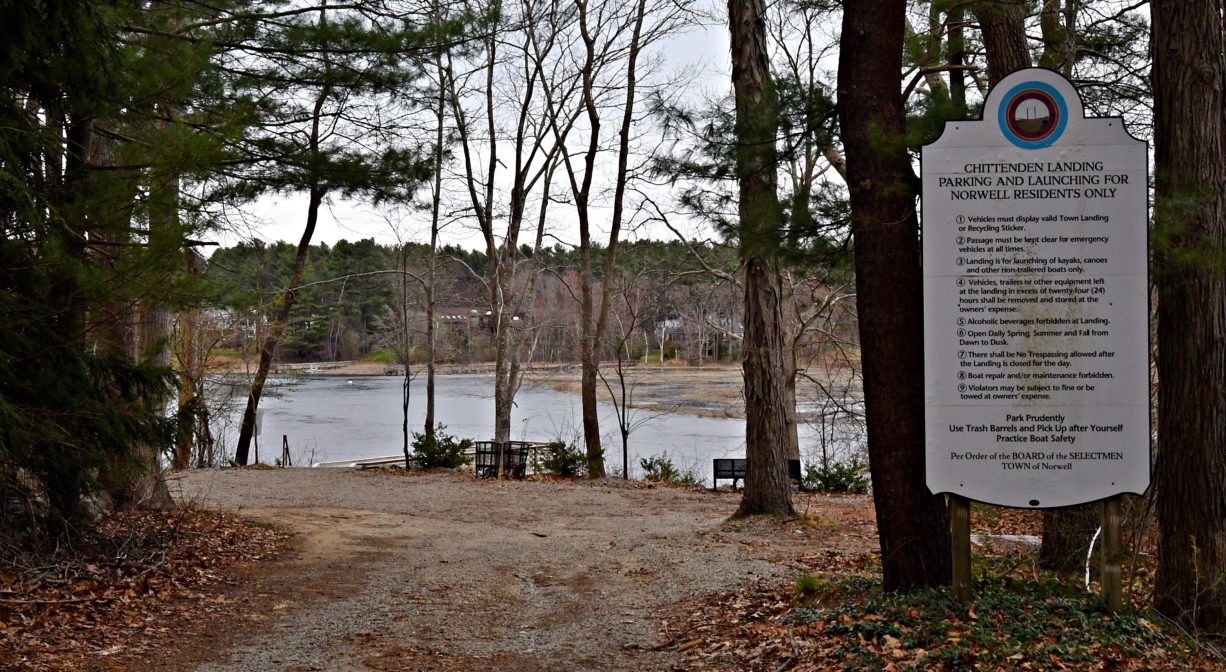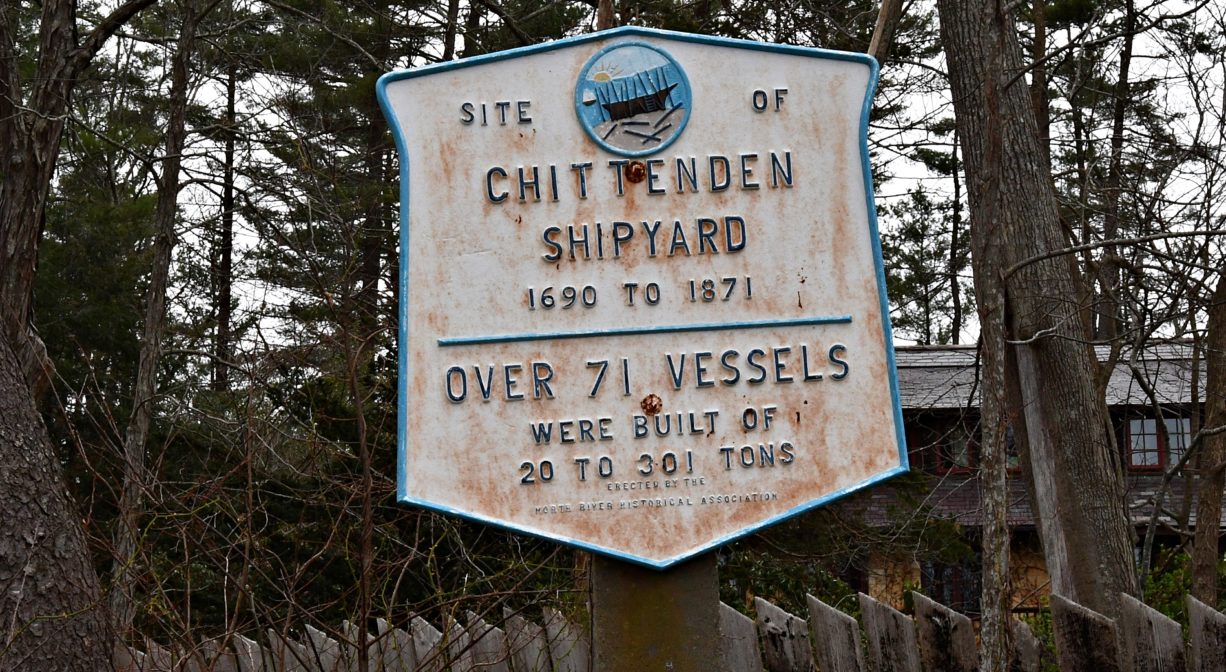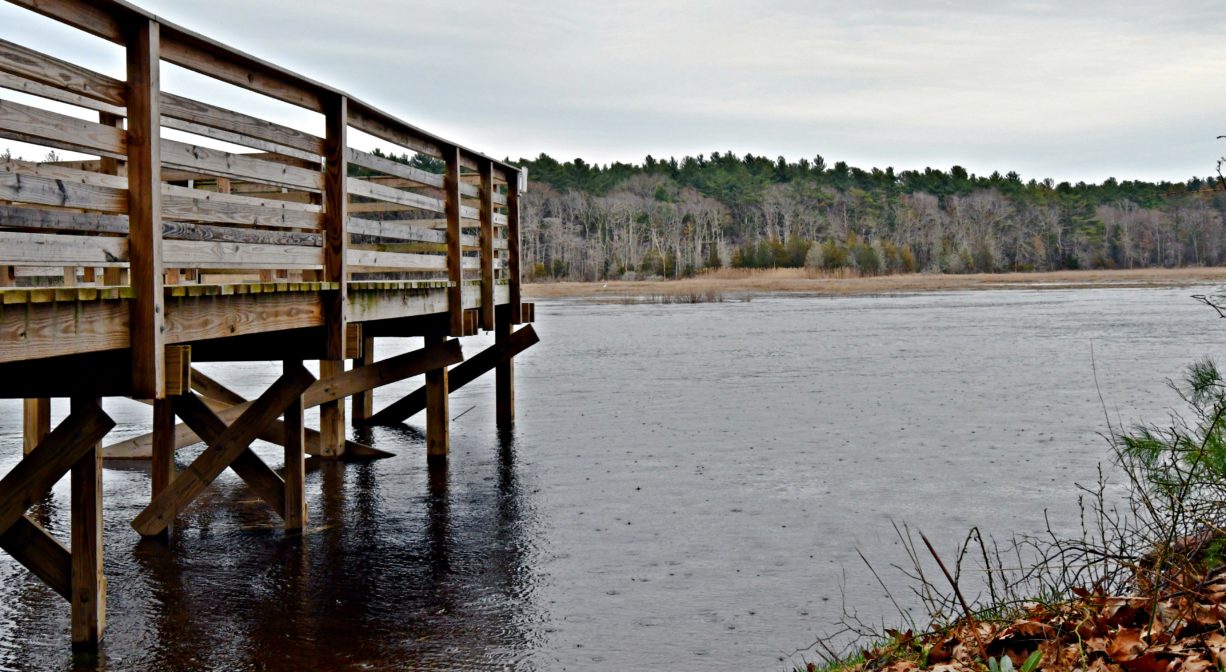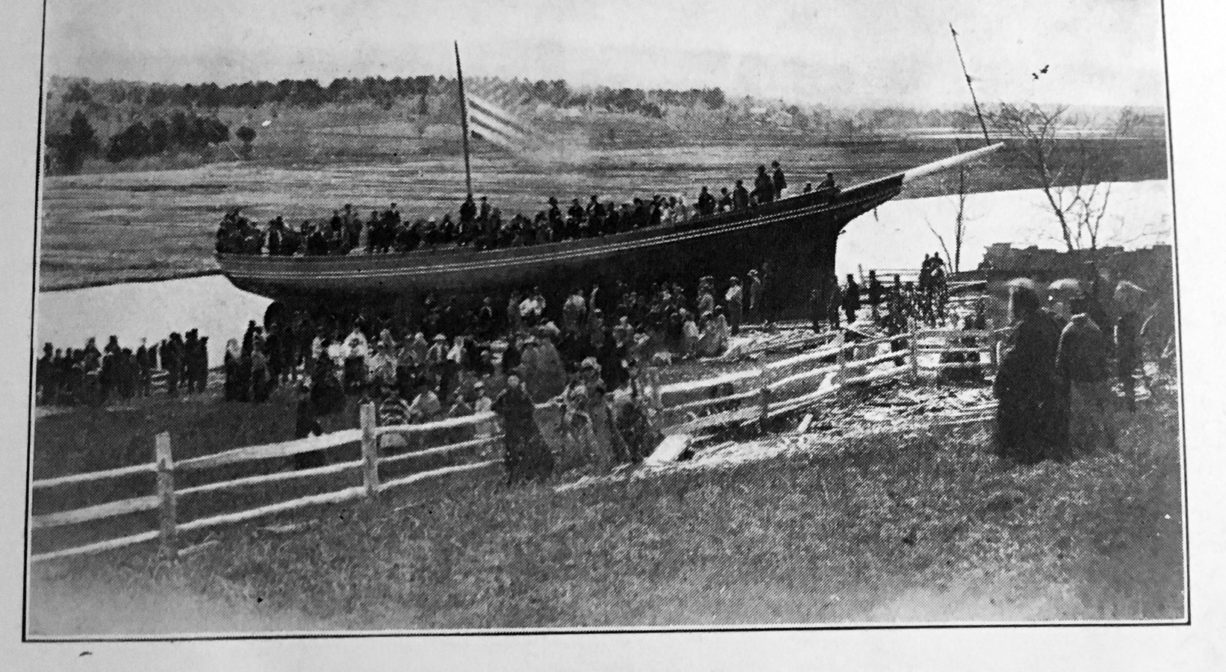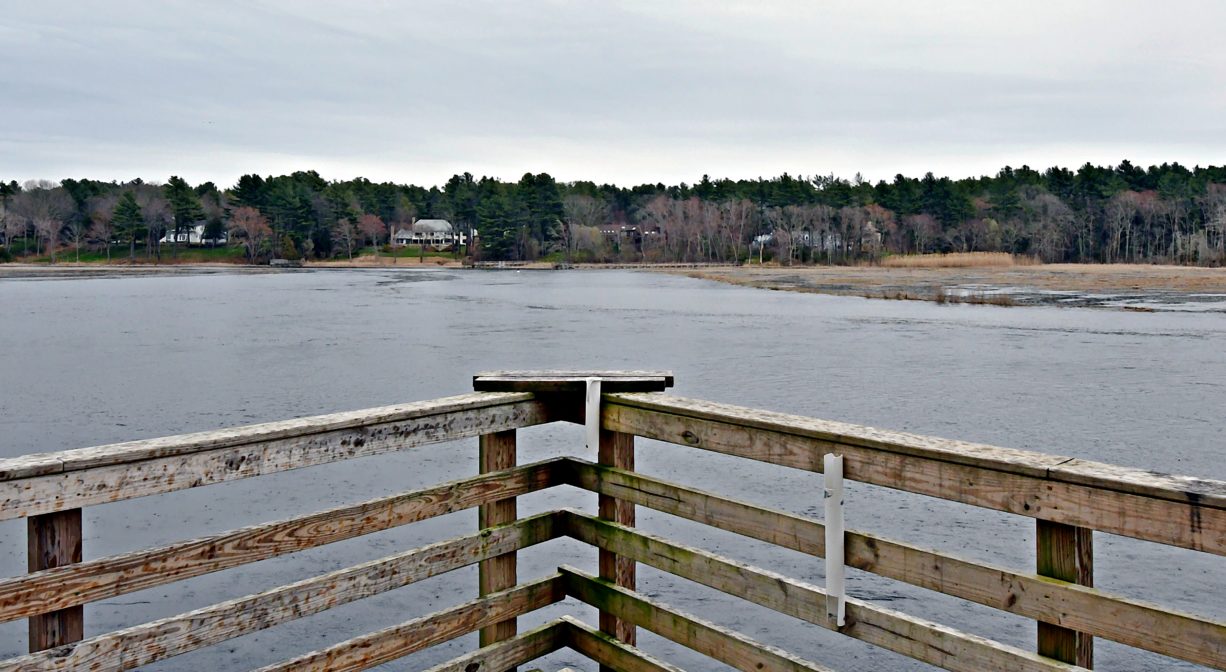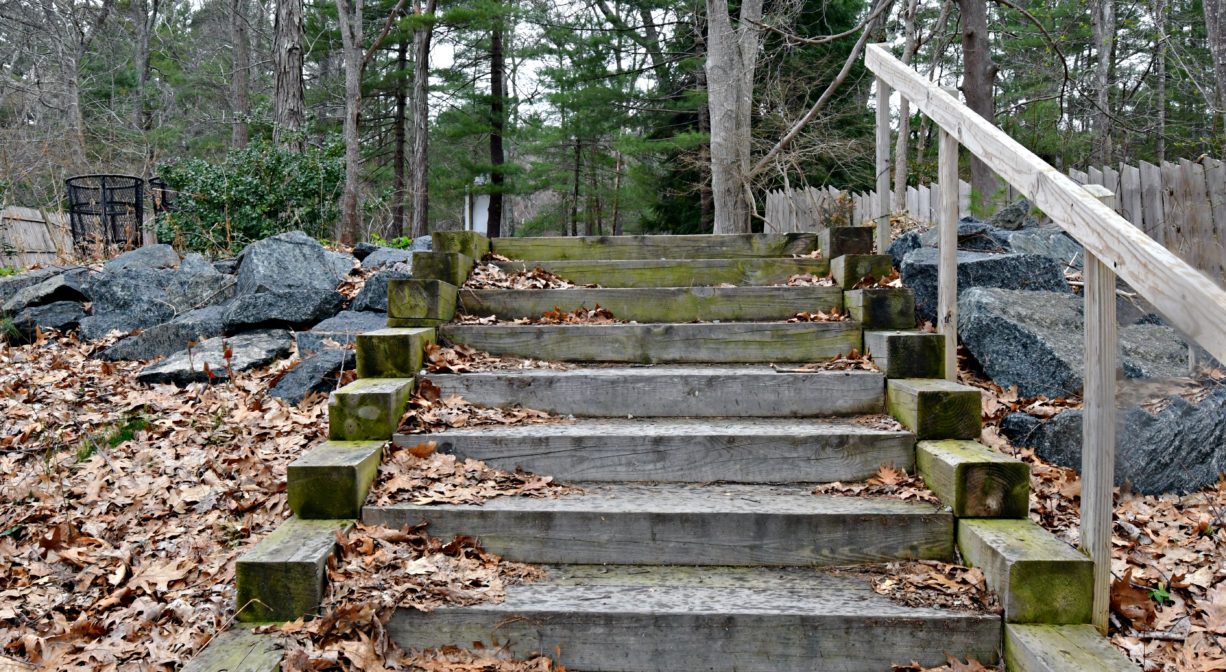110 Chittenden Ln, Norwell, MA 02061, USA
Owned By: Town of Norwell
This Norwell town landing features a fishing dock and a canoe/kayak launch area. It is also a historic spot. A shipyard was located here as early as 1690, and the last ship built on the North River, the Helen M. Foster, was launched here in 1871. A bronze plaque marks the shipyard site, and the saw pit is still visible. Note: the launching area is rocky and could pose challenges.
Tide Math: High tide at the Chittenden Yard is about 90 minutes after the Boston high tide.
FISHING ADVISORY: It’s important to know that some of our freshwater fisheries are contaminated with mercury, PFAS and/or other concerning substances. The Massachusetts Department of Public Health maintains an online database with up-to-date advisories regarding fish consumption, sorted by location. We recommend you consult this valuable resource when planning a fishing excursion.
Features
The Chittenden Shipyard was active from 1690 to 1871, with a number of different shipwrights at work over the years. There was an active town landing at this site until 1799. The landing fell into disuse for a time, however in 2018 the Town of Norwell made vast improvements, including a fishing dock. Today it’s a lovely spot!
Job Randall was probably the first shipwright to work at this site (1690). He built several ships, ending with the brigantine Adventure (60 tons) in 1705. Next Edward and Isaac Prouty worked here, but there are no records of the ships they built.
The Chittenden Family was next, beginning around 1709 — first Isaac and then his nephew Nathaniel. Next were the Merritts, followed by George Torrey and Joseph Nash. The final vessel built here by the Torrey family was the New Sally, a 56 ton schooner, in 1812. The Torreys then moved on to the Block House Yard, downstream.
Other shipwrights active at this yard included Joseph Pratt, Charles Cole, Laban Souther, and Elijah Cudworth. According to Briggs’ History of Shipbuilding on North River, “In our researches into the business of ship-building on the North River, we find that no man stood higher, or has left a better record of honesty and industry, than Elijah Cudworth.”
Souther & Cudworth built numerous schooners, brigantines and other vessels here from 1822 to 1840. Especially of note was the 232 ton brigantine Josephine (1833) which went ashore about halfway between Humarock and the river mouth and was nearly wrecked . . . but ultimately sailed safely to sea. Souther & Cudworth’s bark Nashua was even larger (301 tons, 1833).
The final builders at Chittenden Yard were the Merritt family — Henry (1851) and Joseph (1862). The final ship built not only at Chittenden Yard, but on the entire North River, was the Helen M. Foster, a 90-ton oak schooner (1871), by Joseph Merritt. The launch of this vessel was a major event, drawing a large crowd.
Our local shipbuilding industry sometimes employed slave labor. Both Boston and Newport were slave trading hubs, and some of the ships built on the North River were use in the slave trade. The Chittenden Shipyard employed both enslaved and free Black men, including Uncle Peter Litchfield and Hezekiah “Black Bill” Williams.
Across the way, at the mouth of Second Herring Brook, Jerry Gunderway, a boat operator and the son of free Black Revolutionary War veteran Richard Gunderway, lived in a shack next door to the shipyard. He was a popular local character and is featured prominently in a photograph in Briggs’ “History of Shipbuilding on North River.” Click here to learn more about this and other stories on the North River Early Black Heritage Trail.
This land is within the region of the Massachusett (or Massachuseuk) Native American tribe. For thousands of years, the land that today is known as Norwell was inhabited by indigenous people who grew crops, foraged, hunted, and fished in the Assinippi and North River areas. Circa 1617, a major outbreak of disease decimated an estimated 90% of the native population in New England, including the Massachusett and Wampanoag tribes that inhabited the South Shore. There are still descendants of these original inhabitants living here today. They are known as the Mattakeesett Tribe of the Massachusett Indian Nation , the Massachusett Tribe at Ponkapoag, and the Mashpee Wampanoag tribe.
Trail Description
No trails. See below for suggested paddling excursions from this location. Timing is approximate and depends quite a bit on wind, tide, and your own strength and stamina.
• Put your boat in the water around the time of ocean low tide and paddle downstream to Cove Creek. Explore the creek and then return with the rising tide upstream to your starting place. (2+ hours)
• Put your boat in the water about 2 hours before ocean low tide and paddle downstream to Damon’s Point and the North River estuary. Then ride the rising tide back upstream to your starting place. (2.5+ hours)
• Put your boat in the water 1 hour before ocean high tide and head upstream to Couch Beach. Stretch your legs at Couch Beach and then return with the slack/receding tide. (2+ hours)
• Stage a second vehicle at Damon’s Point or Driftway Conservation Park. Return to Chittenden and put your boat in the water 2-3 hours after ocean high tide, then take a one-way trip with the outgoing tide to your second vehicle. (2 hours)
• Stage a second vehicle at Pembroke Town Forest or Hanover Public Launch. Return to Chittenden and put your boat in the water 2-4 hours before ocean high tide, then take a one-way trip with the incoming tide to your second vehicle. (2-3+ hours)
Habitats and Wildlife
Chittenden Yard is located on the North River, just upstream of the mouth of Second Herring Brook.
This property is located directly on the North River. The North River rises from marshes and springs in Weymouth, Rockland and Hanson. It is approximately 10 miles in length, with its source at the confluence of the Indian Head River (Hanover) and Herring Brook (Pembroke). From there it flows through the towns of Hanover, Pembroke, Marshfield, Norwell, and Scituate to the Atlantic Ocean between Third and Fourth Cliffs, draining approximately 59,000 acres along the way.
Historic Site: Yes
Park: No
Beach: No
Boat Launch: Yes
Lifeguards: No
Hours: Dawn to Dusk
Parking: Limited on-site parking for Norwell residents with a Norwell recycling sticker.
Cost: Free with sticker.
Facilities:
Fishing dock, geocache location.
Dogs: Dogs must remain on leash. Scoop the poop!
Boat Ramp: No
ADA Access: No
Scenic Views: Yes
Waterbody/Watershed: North River

